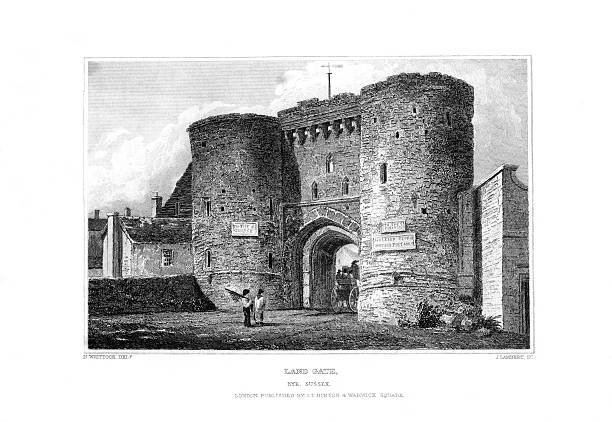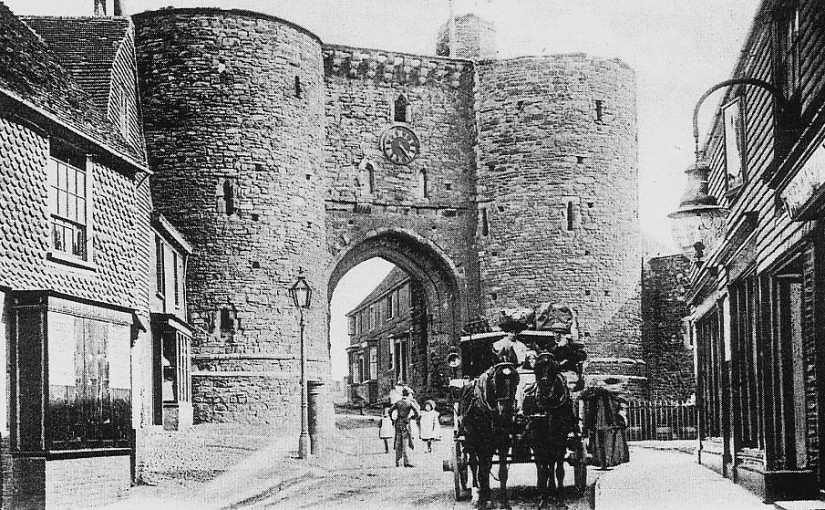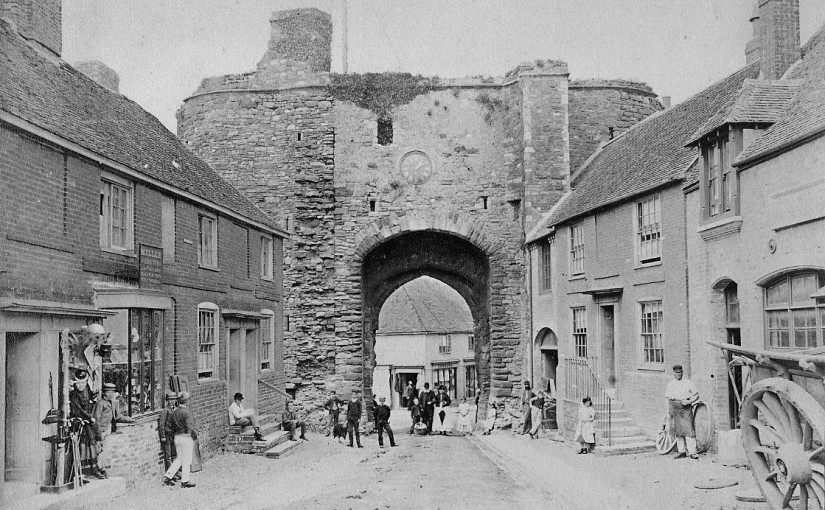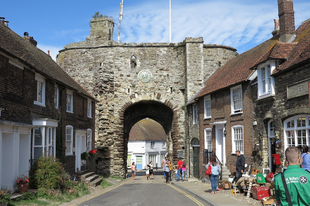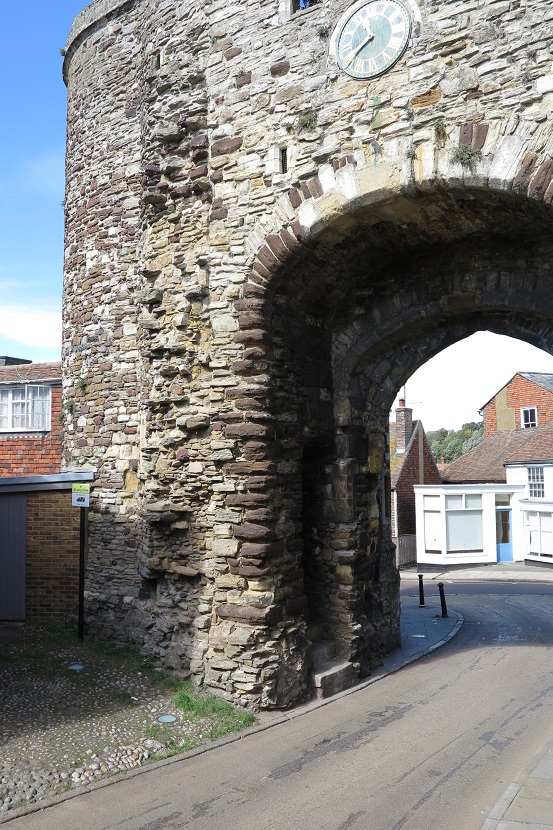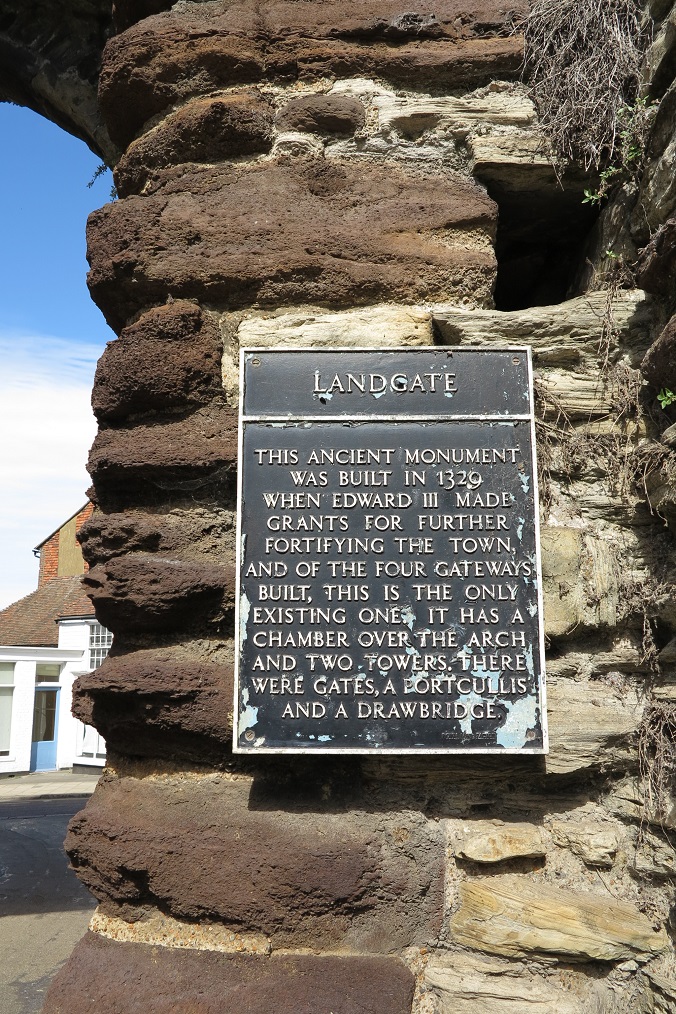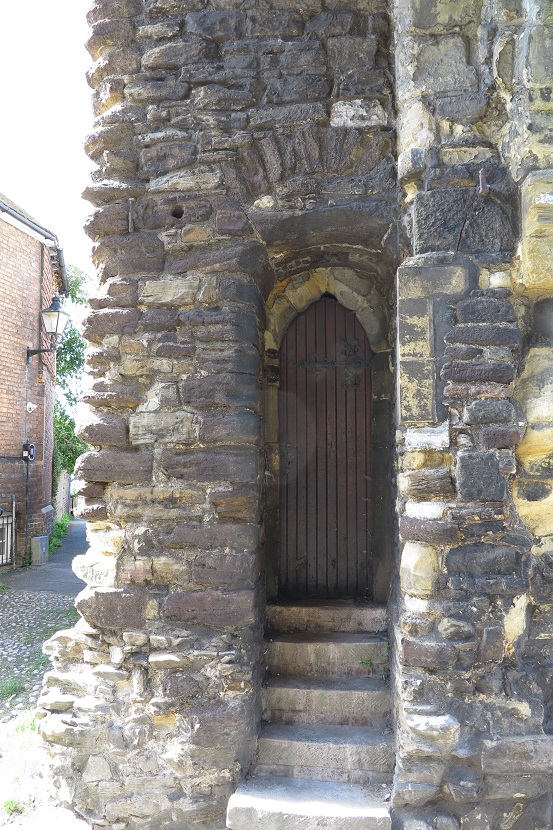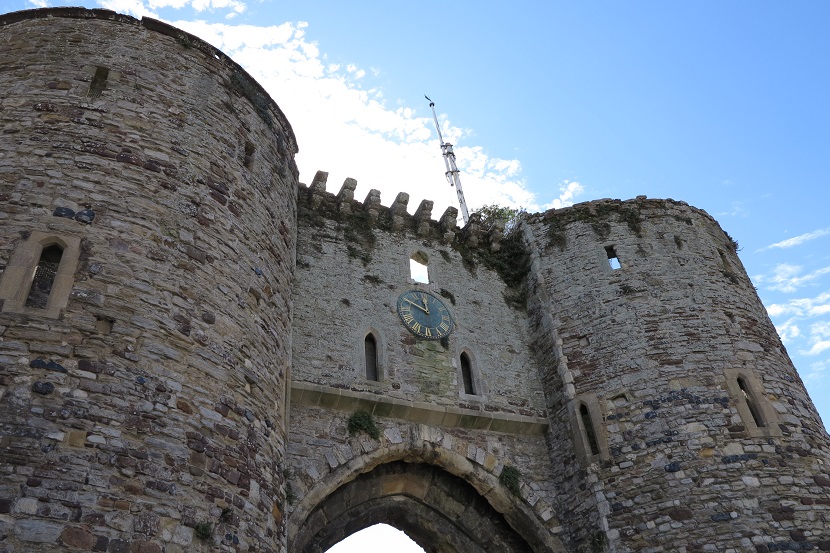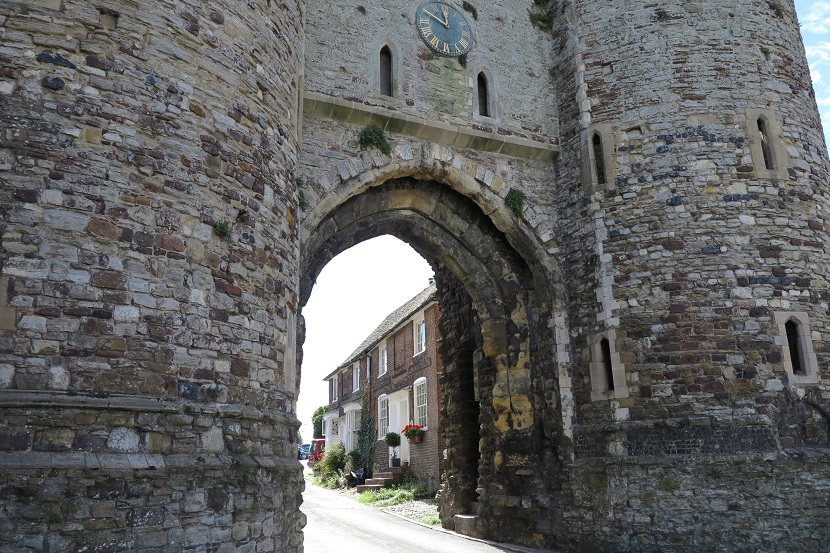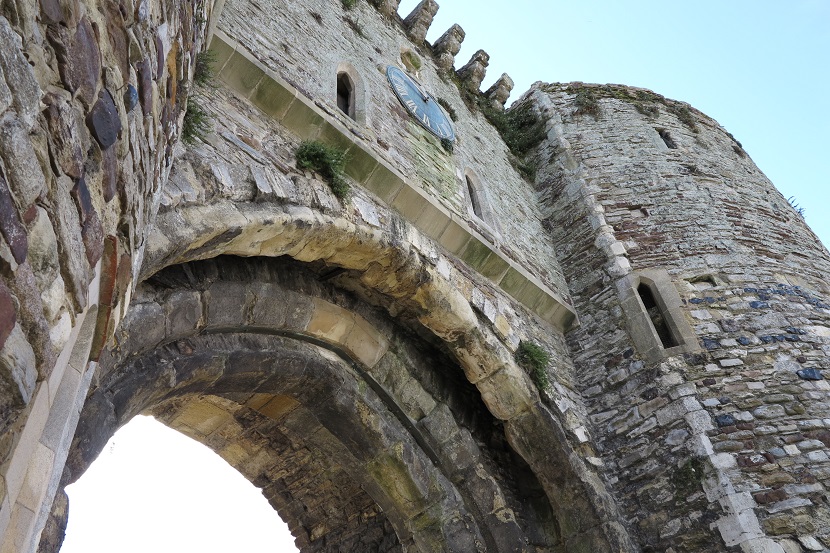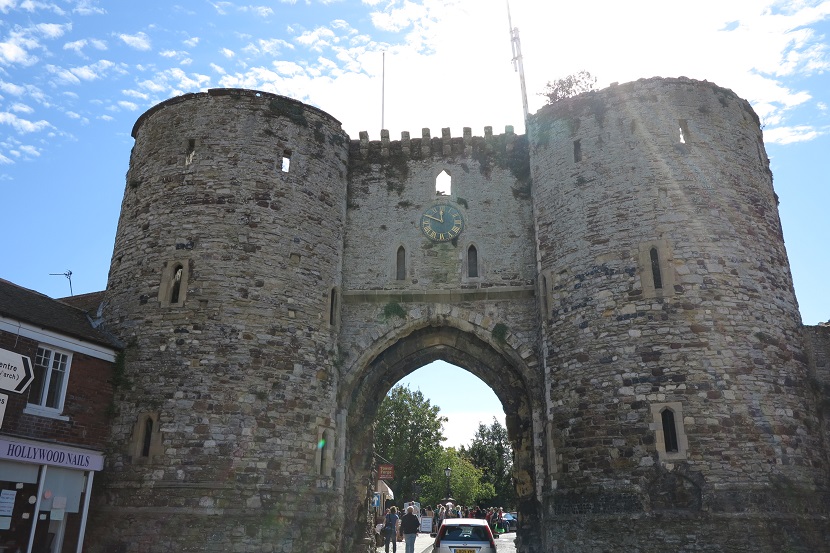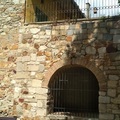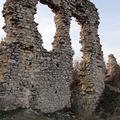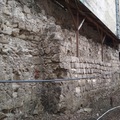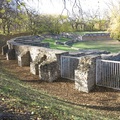A 14. század elején Rye a Dél-partvidék egyik legfontosabb kikötője volt, és a Franciaországgal folytatott százéves háború kezdetével nagyon sebezhető volt a francia hadihajók támadásai miatt. 1339-ben a franciák megtámadták a várost, és 52 házat és egy malomt égettek fel. Körülbelül akkoriban a polgármester belekezdett a város falai és kapui építésébe. A Landgate körülbelül 1340-ből származik, III. Edward uralkodása alatt. Két tornya kőtörmelékből lett építve. A parapetek eltűntek, de a húrszakasz és a formázott karmok maradtak az északi oldalon, amelynek hegyes íve volt a hornyokkal a nehéz "hullókapu" számára. (A portcullist 1735-ben távolították el.)
By the early 14th century, Rye was one of the most important ports on the South Coast, and with the start of the Hundred Years War with France, was very vulnerable to attack by raiding French warships. In 1339 the French attacked the town, and burnt 52 houses and a mill. It was at about this time that the mayor and corporation made a start on the town walls and gates, aided by ‘murage’ granted by the King. The Landgate dates from about 1340, during the reign of Edward III. Built of stone rubble, the two towers have moulded plinths. The parapets have disappeared, but the string course and machiolations with moulded corbels remain on the north front which had a pointed arch with grooves for the portcullis. (The portcullis was removed in 1735. )
